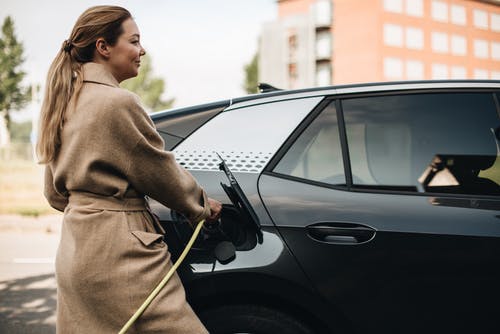
How can the electric car be a benchmark? Here are the reasons that have led users to switch, again, to the conventional vehicle.
The electric car industry is growing exponentially. More and more users decide to bet on a car without polluting emissions. The reasons are various, but, above all, responsibility for the environment prevails and, of course, the greatest savings by not requiring fossil fuels. Well, what are the experiences of these buyers?
In the vast majority of situations, the owner of an electric vehicle states that he has no plans to purchase a gasoline-powered vehicle in the medium or long future. The traditional choice is not chosen because of the driving pleasure, the lack of vibrations, or simply because of the cost savings. Did you realize that there are certain cases where the electric automobile has been nothing but a headache?
Not all-electric car users are satisfied with the experience yes, the truth is that it is a technology that still has its limitations in relation to what a gasoline or diesel engine offers. Despite the advances that have been made in terms of innovation, lithium-ion batteries have not managed to match the level of autonomy they offer compared to a fuel tank. In addition, there is the issue of charging, which is not yet as efficient.
A new report studies that 18% of users who, at some point, decided to switch to the electric car, have returned to lean towards models with conventional blocks. There are several causes that explain this kind of backward or wrong step. It is a movement that, seeing the trend in the sector, draws attention. Are we facing a new trend in the defense of fuel?
Let us see, therefore, what are the keys to this phenomenon, why it is necessary to reel off the data to know the vision of the average consumer, and, of course, to what extent the reasons given can contribute to a deterioration of the reputation of the electric car. Here are the keys to a study that sustainable car manufacturers should study.
A problem associated with autonomy and charging power
It was to be expected that the 2 main weaknesses were going to be related to these variables. Even so, it is difficult to understand, since the purchase of an electric car has limitations that the user must know depending on the use that is going to be given to it. Knowing the opinion of Scott Hardman and Gil Tal, promoters of the study, will help many other potential car buyers.
Tesla continues to grow its Supercharger network around the world. Tesla
As can be read in the specialized portal New Atlas, one of the fundamental problems that the unhappy user has encountered is directly related to the charging power. The problem lies mainly in the quality of the electrical supply wiring present in the home. In single-family houses, adapting the entire line to serve as an electric car implied a very large surcharge.
An inefficient charging system discourages the use of electric cars this, of course, had a direct implication on the charging system. The lower the power transfer, the less autonomy was achieved at the equal time. In some cases, if the car spent an entire night charging, it had barely achieved a few tens of useful kilometers. This is not feasible, which is why many users ended up disposing of their drives.
The study, however, details how the impressions are not the same in relation to the electric car. While the average Tesla owner says they never expect to visit a gas station again, a FIAT 500e is more than willing to go back to mainstream technology. Therefore, there is a clear distinction of quality when it comes to trademarks.

A problem more focused on fast charging than autonomy
The first reason why the user is disenchanted with the electric car is the fast charging system. After all, theoretical autonomy is something that is known at the time of acquiring a vehicle of these characteristics. Everything later is discovered as time passes. Are we facing the main problem that the electric car manufacturer must solve?
The Tesla Model S continues to be a commercial success. The Verge It should be noted, in this sense, that the public charging network is very limited. In fact, only the Supercharger network, only available for Tesla models, is the only efficient one. The others either suffer from maintenance problems, are damaged, have disproportionate prices, or simply do not exist. The charging infrastructure is the most recurring problem.
Will this issue be resolved over the next few years? If you really want to encourage a transformation of the car fleet, you should start by increasing the charging stations on public roads and, of course, increasing the electricity coverage in many areas. This is the only way to achieve a transition towards more sustainable transport.
